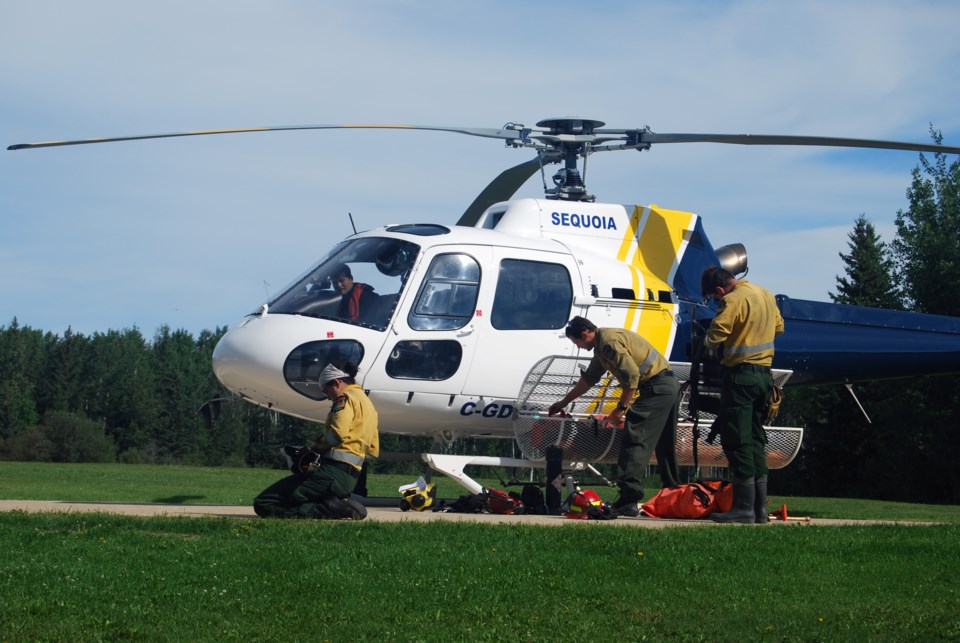Behind The Fire is a series of articles on provincial wildland firefighting in the Lac La Biche area.
What do you picture when you imagine aerial firefighting? Do you envision a squadron of water-bombers flying in formation, dropping hundreds of litres of liquid onto a wildland blaze from above?
You might also picture a Sequoia helicopter, landing in the wilderness to put the first sets of boots on the ground before filling an 815-litre bucket with water.
At a helipad east of Lac La Biche, one of three in the region, a crew of “helitack” firefighters loads equipment into a waiting chopper. Axes, coils of hose, protective gear-it’ s all stowed in preparation for a hasty takeoff.
The wildfire hazard on this particular day-a Wednesday-is climbing towards high, so the crew is expected to be airborne within 10 minutes of being called out.
While pilot Mark Tartal fills the fuel tank-after weighing everything, crewmembers included, to make sure just the right amount goes in-the firefighters tell the POST about their line of work.
If they’ re dispatched in a hurry, they’ ll be the first ones to arrive at the site of a wildfire. Dispatchers at the Fire Centre in Lac La Biche tell the crew where to go, but sometimes precise details don’ t come until later. The important thing is that the helicopter is ready to go at a moment’ s notice.
“They’ ll say, ‘Get up in the air and head northwest,’ ” said helitack firefighter Kris Dallyn.
After they’ ve reached their destination, the helicopter doesn’ t land immediately. The crew searches for access points, nearby infrastructure that could be at risk and other elements that their fellow responders need to know about.
“We’ ll circle a fire a couple of times,” Dallyn said.
All of that information is relayed to the Fire Centre, where a plan of attack is decided on. Depending on the size and severity of the wildfire, the helitack crew might be just one of many different teams and resources that work together to battle the blaze.
First, though, they have to get on the ground. And sometimes that’ s easier said than done.
“Sometimes there’ s not actually a helipad. Sometimes we have to hover into a swamp,” said Dallyn. The crewmembers use chainsaws and other equipment to clear a suitable landing space, if necessary.
After the firefighters are in action on the ground, the helicopter can be put to use dumping bucketfuls of water from the skies. Each bucketful contains 1,800 pounds, or approximately 815 litres, of water. Put succinctly, “It’ s a lot of water,” Tartal says.
